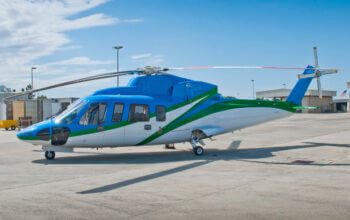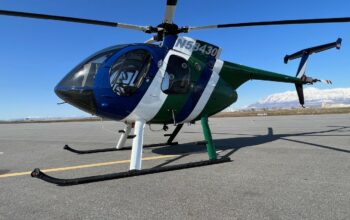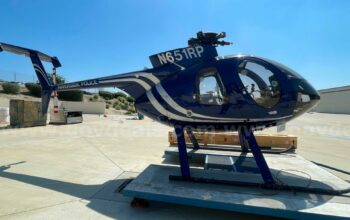An expanded partnership between Archer Aviation and Stellantis will boost production of the Midnight eVTOL platform on several levels, with increased financial backing and better access to essential components and technologies, the companies have told Vertical.

The new deal will see Stellantis work with Archer to stand up the latter’s manufacturing facility in Covington, Georgia, where they plan to begin producing the Midnight four-passenger eVTOL aircraft in 2024.
The aircraft has an expected payload of more than 1,000 pounds (454 kilograms) and a range of 100 miles (161 kilometers), aimed at short distance trips of about 20 mi (32 km).
In an interview with Vertical, Archer founder and CEO Adam Goldstein said the deal would have a wide-ranging impact on the company in the coming years, stretching far beyond short-term manufacturing and finance questions.
“It’s not just a manufacturing partner. It’s not just an investor. It’s all-encompassing,” Goldstein said. “If you think about the buying power of that company, versus where we’re at now, it’s very, very different.”
Goldstein said that Stellantis is one of the largest purchasers of a range of materials that Archer would need to build Midnight. It has strong relations with battery manufacturers, for instance, through its work in the automotive sector, and could support Archer with a range of supply chain issues.
Stellantis chief technology officer Ned Curic echoed this. At a time when supply chains are under strain worldwide, he said his company’s “close integration with the Archer team gives Stellantis high visibility to the components and materials that are critical to producing the Midnight aircraft. This close integration enables Stellantis to assist Archer in addressing supply chain challenges that may be encountered during both the aircraft industrialization and commercialization phases.”
Goldstein said the goal is to open Covington this year and begin building Midnight aircraft in 2024. “The site has already been selected and the work has already been done in getting that plant stood up,” he added.
The expanded deal with Stellantis builds on an existing relationship. This started in 2020, Goldstein said, when the two companies began working on engineering projects together, looking at the types of materials that might be needed to build eVTOL aircraft at high scale.

The companies also worked on noise, vibration and harshness (NVH) questions related to eVTOL aircraft. “In the auto world, it is a really big deal in terms of ride quality,” Goldstein said. It also applies to eVTOL, he noted. “How do you make a cabin quiet?”
Stellantis runs more than 100 automotive plants, producing about 550,000 cars every month, Goldstein said. This is experience that can be adapted to Archer’s Covington facility.
“They wanted to help build vehicles. They wanted to be there on our low-rate initial production line,” Goldstein said. “We have lots of their people who are going to help us with standing up the facility and then actually start building some of the first planes — the first 10 planes or so to get built out of that facility.”
There is also a significant financial aspect to the relationship. Stellantis is already a shareholder in Archer, with plans to increase its holdings in the company through stock purchases in the open market. As part of the expanded agreement, Stellantis is providing equity capital of up to $150 million, which Archer can draw on in 2023 and 2024.
“They made a significant investment into Archer when we went public, and the relationship just kept growing,” Goldstein said. “They’ve also said they would start buying stock on the open market, so they’ve been supportive across all levels, from top to bottom.”
Curic said Stellantis views the eVTOL sector as a once-in-a-generation opportunity to redefine urban transportation.
“Archer is in a strong position to be first to market and remains on track to achieve type certification of Midnight by the end of 2024 and launch initial commercial operations in early 2025,” he said. “Stellantis will leverage its deep manufacturing engineering expertise and other capabilities to assist Archer in meeting that timeline.”









